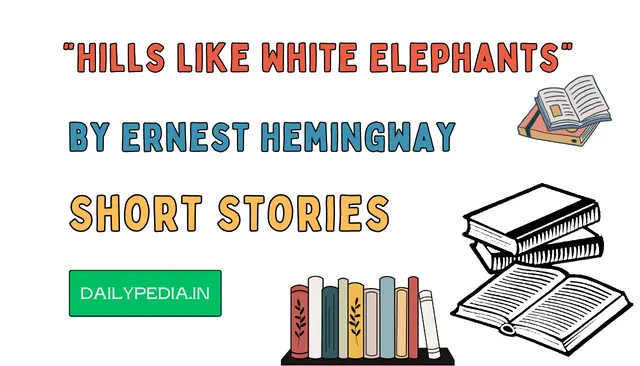“Hills Like White Elephants” is a short story written by American author Ernest Hemingway. It was first published in 1927 in the literary magazine “transition” and later included in Hemingway’s collection of short stories titled “Men Without Women,” which was published in 1927. The story is known for its minimalist style and its exploration of complex themes through dialogue and subtext.

The story is set at a train station in Spain, where a man and a woman, referred to as the American and Jig, are waiting for a train. They engage in a seemingly mundane conversation, discussing drinks and the landscape. However, it becomes clear that they are actually discussing a much more significant and sensitive issue: whether or not the woman should have an abortion. This topic is never explicitly mentioned in the story, and instead, it is conveyed through their indirect and often ambiguous dialogue.
The “white elephants” in the title are symbolic of the burden and the difficult decision the couple is facing. The story delves into themes of communication, the consequences of choices, and the complexity of human relationships. Hemingway’s spare and economical prose style leaves much of the story’s meaning to be inferred by the reader, making it a classic example of the iceberg theory, where the deeper themes and emotions lie beneath the surface of the text.
Share With Your Friends“Hills Like White Elephants” is often studied in literature courses for its masterful use of subtext and symbolism. It remains one of Hemingway’s most celebrated and anthologized short stories, showcasing his talent for capturing the complexities of human interactions and emotions in a concise and powerful narrative.
Daily Pedia Short Stories